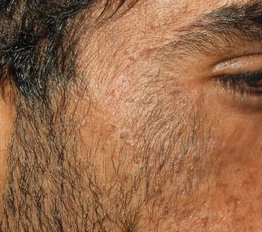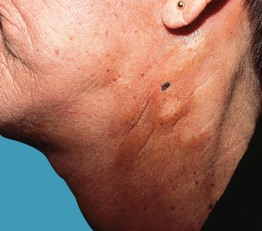41
Porphyrias
The porphyrias represent a group of metabolic disorders in which there is dysfunction of the enzymes involved in heme synthesis (Fig. 41.1). With the exception of acquired porphyria cutanea tarda (PCT), the underlying etiology is monogenetic mutations. Porphyrins absorb light energy (400–410 nm) and their accumulation within the skin can lead to photosensitization, with water-soluble porphyrins producing blisters and lipophilic porphyrins leading to acute burning and erythema. This chapter focuses on those porphyrias with cutaneous manifestations.
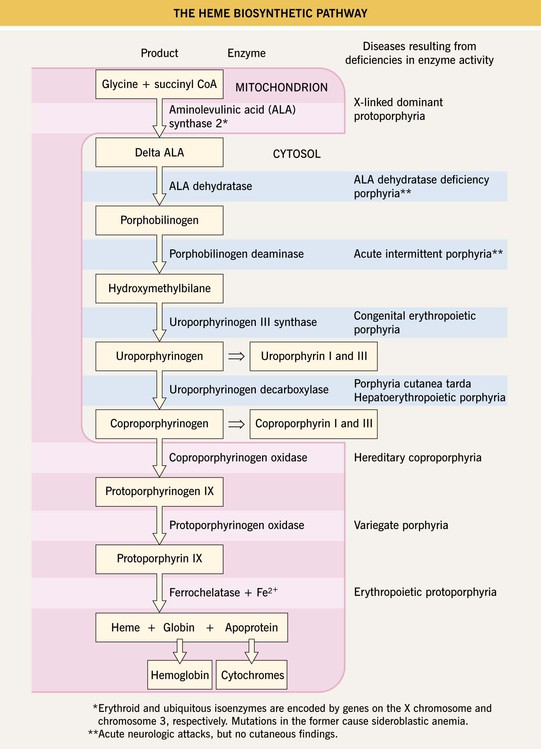
Fig. 41.1 The heme biosynthetic pathway. Courtesy, Jorge Frank, MD, and Pamela Poblete-Gutiérrez, MD.
Porphyria Cutanea Tarda (PCT)
• In addition to photosensitivity, characteristic skin findings include fragility, erosions, vesicobullae, milia, and scars in sun-exposed areas, especially on the dorsal aspects of the hand (Fig. 41.2); hypertrichosis (malar region) and hyperpigmentation can develop on the face (Fig. 41.3); morpheaform plaques are seen less often (Fig. 41.4).
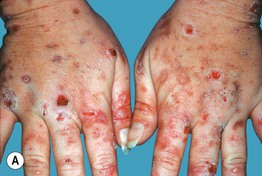
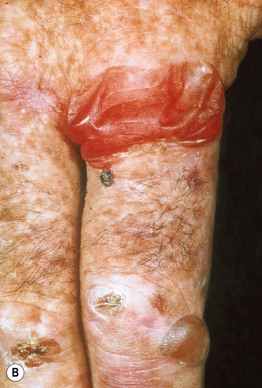
Fig. 41.2 Porphyria cutanea tarda. A Marked fragility with multiple hemorrhagic crusts, erosions, and milia as well as scars. B Flaccid bulla and tense vesicle with clear fluid on the forefinger, accompanied by crusts and scars. B, Courtesy, Jorge Frank, MD, and Pamela Poblete-Gutiérrez, MD.
Stay updated, free articles. Join our Telegram channel

Full access? Get Clinical Tree


